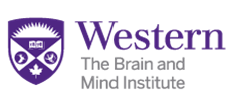Perineuronal Nets: Plasticity, Protection, and Therapeutic Potential
Document Type
Article
Publication Date
7-1-2019
Journal
Trends in Neurosciences
Volume
42
Issue
7
First Page
458
Last Page
470
URL with Digital Object Identifier
10.1016/j.tins.2019.04.003
Abstract
© 2019 Elsevier Ltd The relationship between neurons and perineuronal nets (PNNs) is attracting attention as a central mechanism controlling brain plasticity. In the cortex, PNNs primarily surround inhibitory parvalbumin interneurons, playing roles as both a regulator of synaptic plasticity and a protective barrier. PNNs have a delayed developmental trajectory and are key components in the closure of critical periods of heightened neuroplasticity. In animal models, manipulating PNNs outside this critical window can enhance cognition, suggesting a potentially therapeutic approach for attenuating cognitive decline. However, the crucial role of PNNs in plasticity and protection means that such therapeutic modulation must strike a careful balance: manipulation of PNNs to promote plasticity may have unintended negative consequences resulting from excessive plasticity or from exposure of neurons to neurotoxins.

- Citations
- Citation Indexes: 132
- Usage
- Abstract Views: 5
- Captures
- Readers: 314
- Mentions
- Blog Mentions: 1
- News Mentions: 1



Notes
This article is paywalled; please seek access through your institution's library